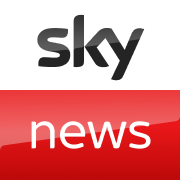Why a dark cloud still looms over the UK economy despite surprising inflation dip
A larger-than-anticipated fall in inflation last month to 1.7% is the latest gust of economic data to suggest the prevailing economic wind is favourable.
The first dip below the Bank of England’s target rate of 2% in more than three years, it follows news that wage inflation is slowing, and comes a week after confirmation the economy returned to growth, albeit modestly, in August.
Drivers may have noticed the fall in fuel pump prices which is the primary cause of the reduction, and while the figure is forecast to rise again before year’s end, a stabilisation around the 2% target is welcome.
So too is a reduction in core inflation – the rate of goods and services price rises without volatile commodities like food, energy and fuel – to 3.2%.
That suggests the lingering “second-round” effects of the Ukraine-driven inflation spike are starting to fade, as indicated by the easing wages data.
Money blog: Shock fall in inflation will impact pensions, benefits and interest rates
As a result, the likelihood of the Bank of England cutting interest rates at its next meeting in early November increased from near-certainty to nailed on.
The markets put the chances of a 0.25 percentage point cut at 92% following the inflation news, with the prospect of another 0.25 percentage point rate cut in December at 79%.
The figures are consequential for pensioners and those on benefits too.
September’s CPI inflation is part of the triple-lock calculation, confirming pensions will be uprated by the higher wage growth figure of 4.1%, worth more than £470 a year.
Universal Credit meanwhile is linked just to CPI, locking in a 1.7% increase forecast to be outstripped by expected higher inflation before it comes into force next April.
Be the first to get Breaking News
Install the Sky News app for free



Read more from Sky News:
PizzaExpress prepares to serve up new slice of debt to investors
CBI in talks to sub-let parts of London headquarters
While lower inflation and falling rates are welcome for government spending too, the dark cloud over the public finances remains.
Setting aside the £22bn “black hole” identified by the Treasury, another £20bn was always going to be required to prevent real-terms cuts to public spending.
The previous government’s decision to dodge a full spending review in its final year in office, instead pencilling in a 1% increase incompatible with keeping promises to protect health, education, and defence, means whoever was in power after the election faced the same challenge.
Find the money to ensure public spending does not decline in real terms, or make further cuts to unprotected departments already failing to deliver basic services.



